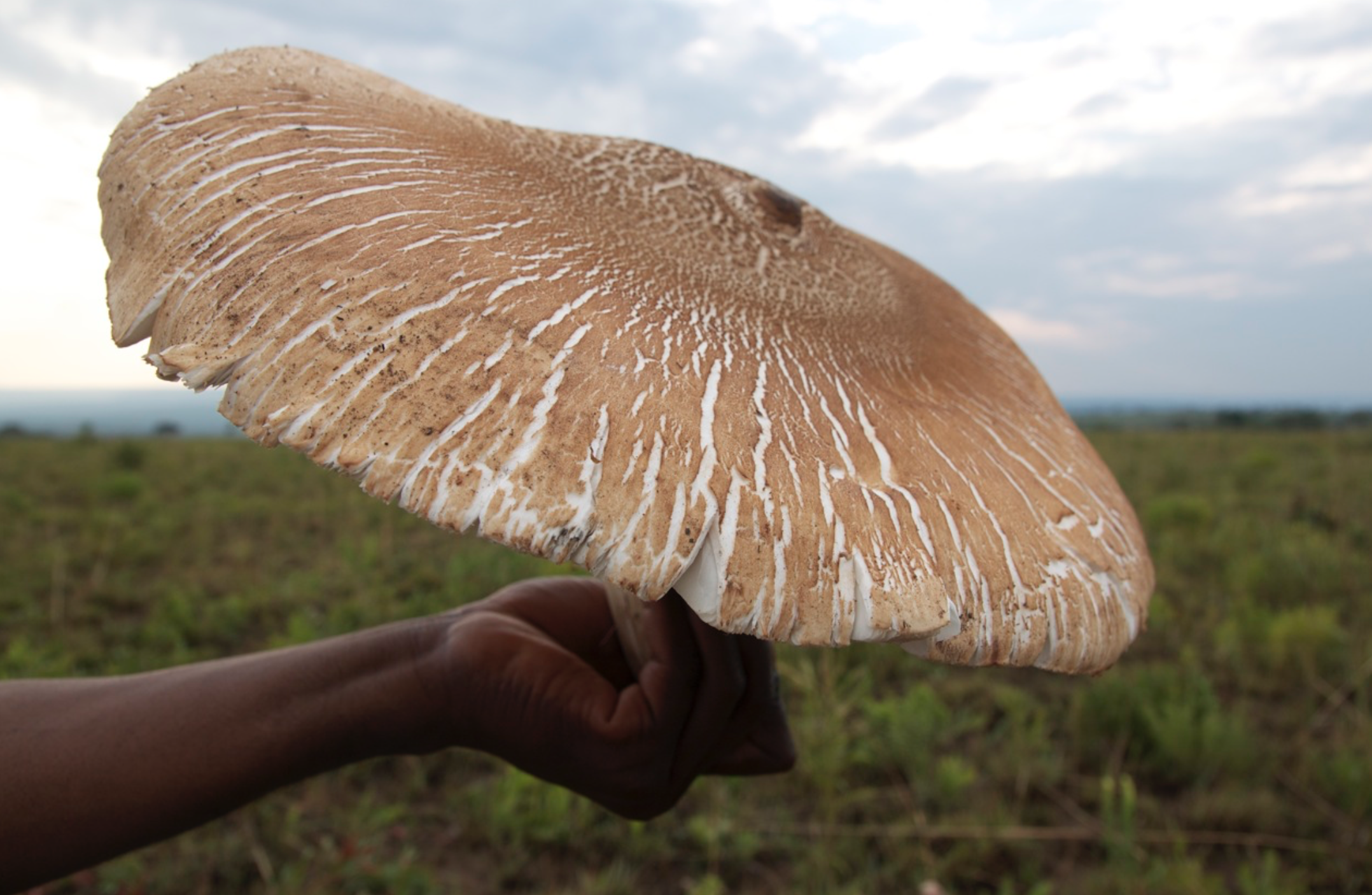Fungal agriculture in insects is a fascinating evolutionary adaptation that has occurred more than once throughout Earth’s long history. A captivating notion is realized when you compare our own agricultural history to that of insect cultivators. The first human farms appeared just 8,000 years ago! That may seem like a long time, but leafcutter ants have been tending to their fungal cultivars for nearly 50 million years! That’s more than 6,000 times older than our first farms! So far, I’ve written about two of the three insect groups that ‘figured out’ how to farm fungi, including the bark beetles and leafcutter ants. I thought today would be a perfect opportunity to talk about the third group endemic to the Old-World tropics; the fungus farming termites. This subfamily of higher termites within the Macrotermitinae has co-evolved with the fungal genus, Termitomyces. Together, they have formed quite a strong symbiotic relationship, a union in which both organisms have greatly benefitted.
Schematic of the agricultural termite life cycle. From Poulsen 2015.
Like other fungal cultivating insects, the fungi associated with termites receive a steady supply of plant material, in a location with fine-tuned temperature and moisture content optimal for growth. In turn, the termites receive an easily digestible, dependable food source. The evolution of this symbiosis has led to a period of adaptive radiation in this subfamily. The Macrotermitinae first started cultivating fungus nearly 30 million years ago, and have since then diversified into more than 300 species of fungal farming termites. The vast majority of them can be found in forest and savanna habitats across Africa, with only four species colonizing Asia and just one making its way to Madagascar.
Unlike the other agricultural insects, the majority of these termite species don’t carry the fungal cultivar from the nests they originated from. Instead, the royal pair mate, producing the first foragers that find Termitomyces spores, eventually pairing the basidiospores with plant material in an underground chamber. In the 330 species of fungal farming termites, only 2 species have developed a means to transport their parental fungal cultivar to the new nest. For this reason, most species of Termitomyces are transferred horizontally, rather than vertically.
This method of transmission is a key driver in the evolution of the morphological traits in the species featured in today’s Fungi Friday-Termitomyces titanicus. You see, because leafcutter ants bring their parental cultivar with them when individuals leave to set up new colonies, the fungus within their nest has lost the ability to form fruiting bodies. Fungi associated with leafcutter ants don’t need to spend energy on forming a mushroom to ensure dispersal, since its mutualist acts as a disperser. But because the vast majority of termite farmers don’t disperse via their termite symbiote, Termitomyces titanicus has not only held on to its ability to form mushrooms, but produces the largest fruiting body on the planet. The caps of this species erupt out of termite mounds, and can have a diameter of a meter!
The biggest mushroom in the world, Termitomyces titanicus. By Danny Newman.
Why has there been a directional selection towards producing huge mushrooms in this species? Well for one, it acquires an enormous amount of resources from its insect mutualist, as these colonies can reach densities in the millions, with countless individuals foraging for organic material to feed their symbiote. Aside from obtaining large amounts of energy, this horizontally transferred fungus must spread enough spores to be found by suitable termite species. In low producing savanna ecosystems, there’s only enough resources to support these immense termite mounds, which mean their distribution may be quite patchy. To ensure the fungus gets a good chance at finding a suitable substrate, it has evolved one of, if not the, largest mushrooms on the planet. As you know, the larger the mushroom, the more spores it produces.
(A) Mature Macrotermes natalensis colony in a South African landscape. (B) The underground fungus comb, where workers maintain their fungal cultivar. (C) The royal chamber in which the queen and king reside. From Poulsen 2015.
Supported by the continual flow of food from the immense masses of termite foragers, the huge size of Termitomyces titanicus increases the chances of the initial termite foragers to find its spores. This hypothesis is further supported by describing the fungi associated with the two termite species that transfer parental cultivars to their new colonies. When termites develop this behavior, their associated fungi lose the need to produce spore bearing structures. This is analogous in the leafcutter ants and many of the bark beetles. Vertical transmission causes a shift in morphology, as the fungi don’t need to spend energy on ensuring dispersal. Compared to agricultural termites, I believe that the reason so many species of fungi associated with leafcutter ants don’t produce fruit bodies because they have had a 20-million-year head start. Remember, leafcutters made their way onto Earth’s scene 50 million ago. Given enough time, I think termites will start vertically transmitting cultivars more and more, thereby reducing the need for mushroom production. This idea also paints a picture of the ant’s past, revealing the ancestors of their cultivars probably produced big mushrooms before vertical transmission became a widespread adaptation.
[Link 1]






